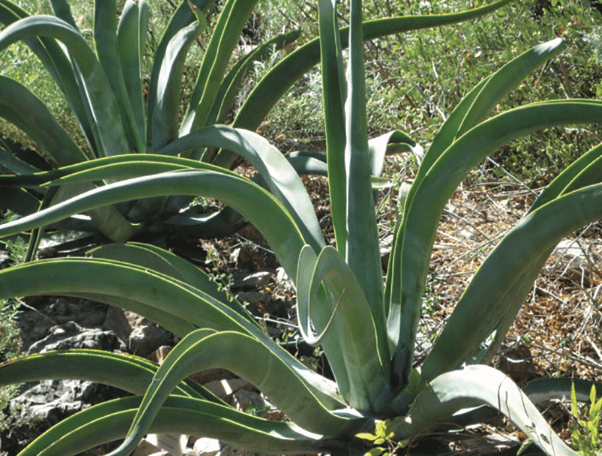 The thick-leafed plant with its curved, twisted, pointed, bluish green leaves resembles an octopus. It reaches heights of four feet with a six- foot spread. At the end of its life, in springtime, usually within seven to ten years
The thick-leafed plant with its curved, twisted, pointed, bluish green leaves resembles an octopus. It reaches heights of four feet with a six- foot spread. At the end of its life, in springtime, usually within seven to ten years
, it produces a ten- to sixteen-foot tall spike of yellowish white blossoms. These appear on a bulblet, which is a small or secondary bulb capable of producing a new plant when broken off and propagated. This agave does not produce the usual offshoots.

After blooming, the mother plant will die. This species was widely used as a cleanser in its native habitat. The mature leaves were dried and then pounded to form a brush. When the leaves are wet, they release a sudsy compound and were used to clean clothes and other items. The plant tolerates full sun or partial shade but is intolerant of reflected heat, and the foliage may turn yellow if exposed to too much heat. Irrigate it occasionally during the hot, dry season to hasten its growth. It handles most soil as long as it is well draining. The octopus agave is hardy to the mid to low twenties Fahrenheit and shows frost damage at lower temperatures. When frosted, the plant is slow to recover. Use it in tropical settings around pools, ponds, and water features or in masses. It is native to rocky cliffs and the deserts of Southern Sonora, Sinaloa, Durango, and Jalisco, Mexico, growing from 2,000 to 5,000 feet.
